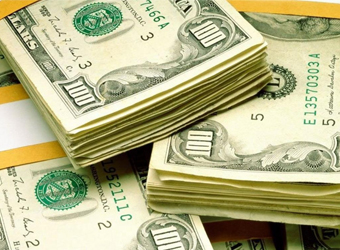Dollar prices slipped versus the yen on Thursday as a sudden fall in Japanese equities from multi-decade peaks dampened risk sentiment.
The dollar fell 0.2 percent to 113.64 yen, having pulled back from an intraday high of 114.07 yen.
Currency traders said the yen gained as moves in Japanese equities turned volatile.
Japan’s benchmark Nikkei share average, which rose 2 percent earlier on Thursday and broke above the 23,000 level for the first time since January 1992, finished the day down 0.2 percent.
The yen is a low-yielding currency that is often used to fund investment in higher yielding currencies and assets when risk sentiment is positive.
It often comes into favor, however, in times of market turmoil, when investors reduce their exposure to risk.
Against a basket of major currencies, the dollar eased 0.1 percent to 94.777, staying below a three-month high of 95.150 set in late October.
The New Zealand dollar touched a two-week high after comments from the country’s central bank on the inflation outlook were taken as hawkish, even as it kept interest rates unchanged as expected.
The New Zealand dollar rose to as high as $0.6974 in early Asian trade on Thursday, its highest level since Oct. 24. It later came off that peak and was last trading at $0.6954.
The Reserve Bank of New Zealand said fiscal stimulus from a new Labour-led government and a weaker currency would lead to faster inflation. It projected a possible rise in interest rates for the second quarter of 2019, three months earlier than previously expected.
Analysts said the broader market focus was on the fate of the Trump administration’s tax reform plans.
A U.S. Senate tax-cut bill, differing from one in the House of Representatives, was expected to be unveiled on Thursday, complicating a Republican tax overhaul push and increasing skepticism on Wall Street about the effort.
Any potential delay in the implementation of tax cuts, or the possibility of proposed reforms being watered down, would tend to work against the U.S. currency, analysts said.
“There’s very much a risk of disappointment,” said Steven Dooley, currency strategist for Western Union Business Solutions in Melbourne.
“The U.S. dollar could go through a weakening phase on the back of uncertainty around that tax reform,” Dooley said, referring to the near-term outlook.
The euro edged up 0.1 percent to $1.1605, staying above a low of $1.1553 set on Tuesday, its lowest level since July 20.
The dollar has been supported recently, partly due to expectations for the Federal Reserve to raise interest rates in December for a third time this year and for further Fed policy tightening next year. Source: Reuters
Source: Reuters



